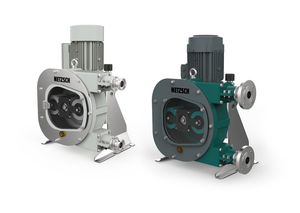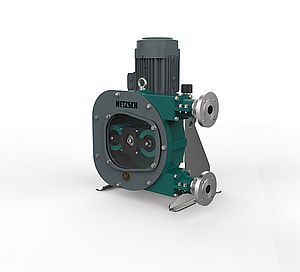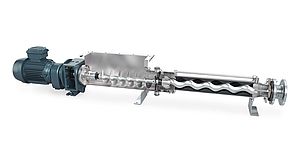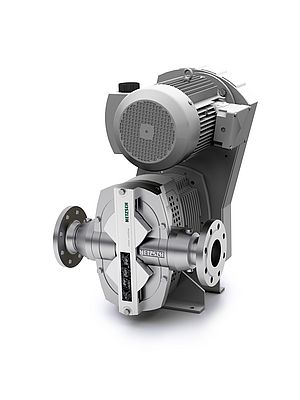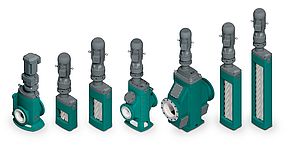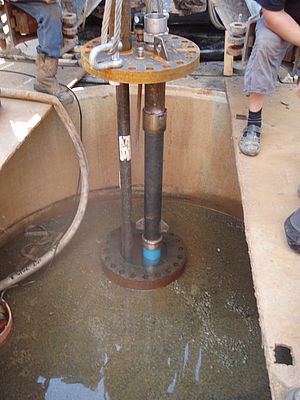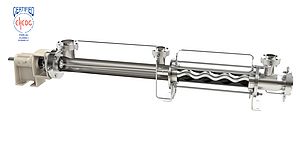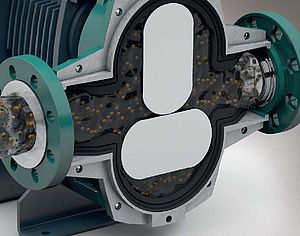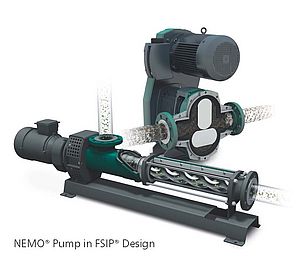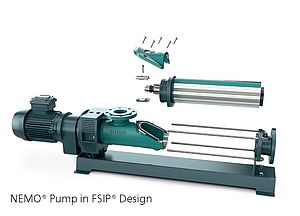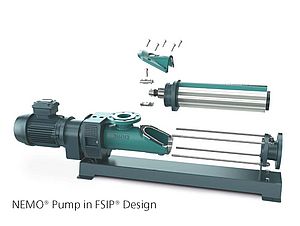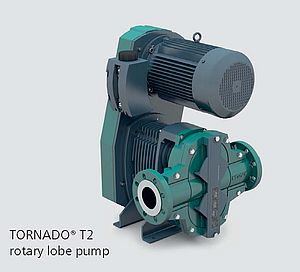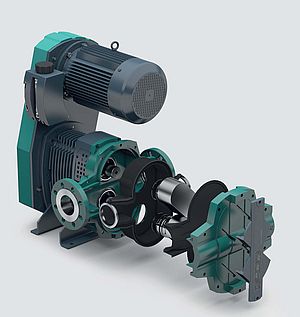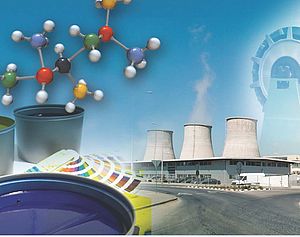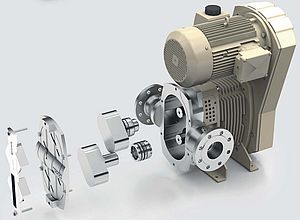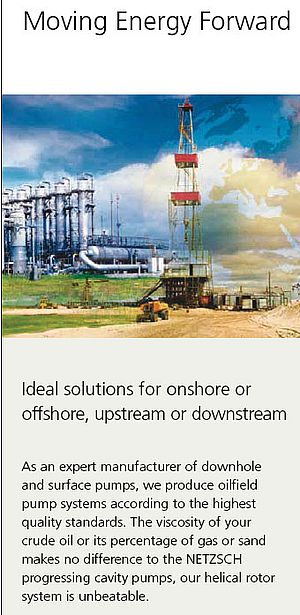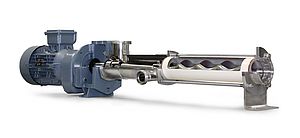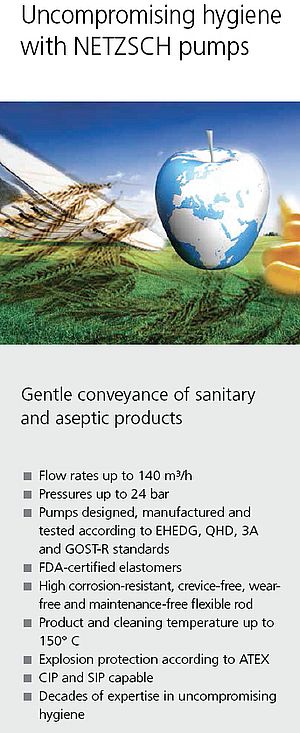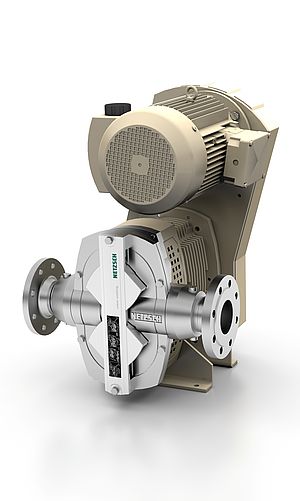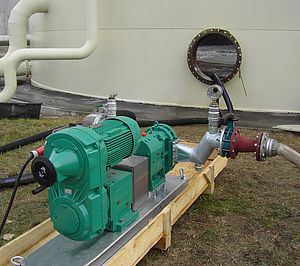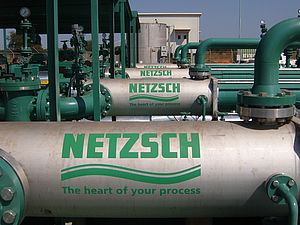NETZSCH has developed an adapted progressing cavity pump technology in the NEMO® B.Max® pump range to ensure an uninterrupted fermentation process. Among the advantages of the progressing cavity pump technology there is the fact that hardly any pulsation or strong shear forces occur which ensures gentle transport with stable pressure. That's an essential feature because the mixing of the substrate has a crucial influence on the efficiency of the fermentation process. That is why B.Max® was designed to support the homogenisation of the medium and a uniform biomass pulp. This allows fermentation bacteria and process heat to be distributed evenly throughout the substrate and reduces the formation of floating layers.
How the Progressing Cavity Pump Works
To achieve this, the pump is equipped with a position-optimised feed port which guides the recirculated mass into the mixing area against the direction of flow. This creates turbulence in the biomass which causes the individual materials to mix during feeding. This process is additionally supported by the coupling rod in the mixing chamber which is equipped with a screw conveyor.
The screw ensures that the sometimes rather viscous biomass is reliably transported into the pump area. The offset segments of the mixing screw and their high thread pitch ensure that more substrate flows to the progressing cavity screw than the screw can transport away. The result is an intentional, controlled return flow which creates further turbulence in the material mixture and therefore its homogenisation.
Robust and flexible
The biomass pump is fed through a large, rectangular feed hopper. The wide shape prevents clogging. For the same reason, the pump section is designed with as little dead space as possible so as not to offer any contact points for entwining or clogging. For cleaning or maintenance work, the housing has large revision openings allowing easy access to the inside without having to dismantle the entire pump.
The B.Max® is generally designed for a high level of robustness which can be increased further by different adaptations depending on the substrate. If, for example, a particularly high resistance to aggressive media is required, the hopper can also be coated and hardened. Furthermore, different types of steel or elastomer with different resistance categories are available for rotor and stator. This allows individual configuration of the pump according to the medium and the application requirements to achieve maximum lifetime with minimum maintenance effort.






